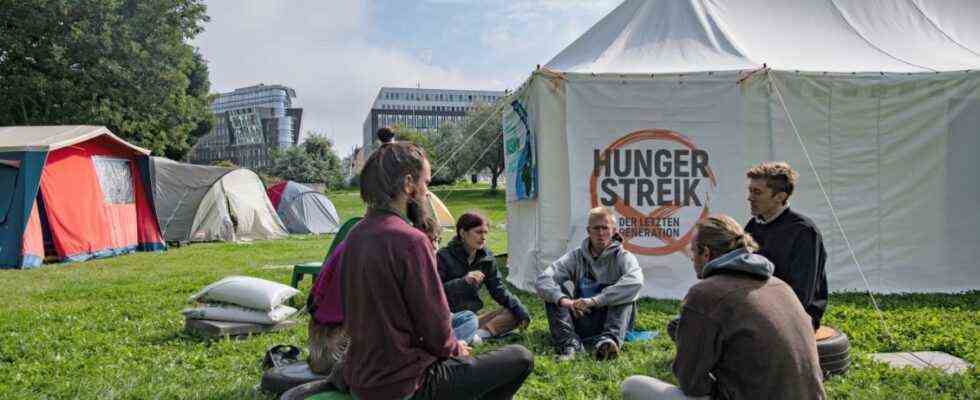The hunger strike is undoubtedly one of the most brutal of the means to get things done. At first hunger only torments, later it paralyzes, at some point all thinking revolves around what one shouldn’t have. It takes a very strong will to get your way through with a hunger strike.
At the end of August, a group of young people went on hunger strike at the Reichstag in Berlin. “We are young, but we are ready to risk our lives,” she said. “We only have one wish that life goes on in the future.” The main demand of their “hunger strike of the last generation”: a conversation with the top candidates from the Union, SPD and Greens, “about the murder of the young generation”. But this conversation will hardly take place.
On the one hand, because a hunger strike – also one for a good cause – always has something blackmailing about it. But politics is reluctant to blackmail itself, and for good reasons too. On the other hand, because most of the candidates are literally walking on thin ice when it comes to climate protection. They all have programs that are full to the brim with climate, the word appears 91 times in the Union alone, the SPD conjures up climate neutrality 16 times, the Greens demand 42 times for more renewables. But the icebergs of the demands are in most cases surrounded by a meltwater of measures – difficult to grasp, constantly in flux. New water in the sea of possibilities.
In an election campaign that is now heavily overlaid with personal questions, small or large mistakes, sympathy values and Sunday questions, this gap is now hardly noticeable. This is the only reason why a party that wanted to raise the CO2 price (and thus fuel prices) as quickly as possible in early summer can now demand a “fuel price brake” that would destroy any price signal at the pump. The CSU is apparently getting away with it.
The DIW has checked the programs: “Much appearance, little being”
The German Institute for Economic Research recently investigated in a study what to think of the big words of the parties. On behalf of the Climate Neutrality Foundation, the researchers investigated how close the parties are to the German climate targets with their proposals, the result: “A lot of appearances, little being”, as DIW climate expert Claudia Kemfert says. And that also coincides with the conclusion which my colleague Marlene Weiß and I get to on the SZ podcast: Climate protection has never played such a big role in election programs as it did this time. But what follows from this remains strangely vague in many places.
In the analysis of the DIW – it had examined the programs of the Union, SPD, FDP, Left Party and Greens – only the proposals of the Greens come close to the German climate goals, the FDP, on the other hand, is far behind. The governing parties Union and SPD do not do well either. But they would have had time to do things differently for a number of years. At the same time, they too will have to be measured against the high goals they postulate. And all future governments have the Federal Constitutional Court on their necks.
I can understand young people who are overcome by despair. Nevertheless, I hope that the hungry at the Reichstag will not go on strike to extremes. They have already achieved their goal of attracting more serious attention to the issue again in this election campaign. And besides that, we still need her, her strong will and her strength: There is still a lot to design. After the election.
(This text is from the weekly Newsletter Environmental Friday you here free of charge can order.)

